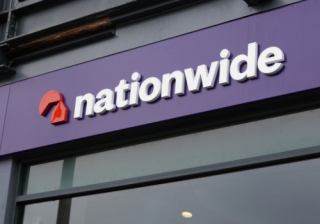The allure of the buy-to-let market in 2022
The allure of the buy-to-let market appears to be as resilient as ever due to the faithful old combination of a lack of supply and rampant demand – amongst many other factors of course. High on the list of ‘other’ factors is the potential of the yields on offer which – whilst inevitably varying from region to region – remains strong.

"The need for a variety of larger properties and family homes is stimulating rental activity across many regions of the UK."
Property investors and landlords continue to calculate rental yield as the main variable in monitoring the value of their property investments and portfolios. In periods when house prices have sky rocketed, expectations over capital appreciation may have overshadowed yield to a certain extent but the value attached to rental income and yield remains the backbone of any well-performing property portfolio. And it’s useful for intermediaries to keep abreast of current trends when servicing the needs of their landlord clients.
With that in mind, data from The Deposit Protection Service (DPS) recently found that average UK rents increased for the fifth consecutive quarter during Q4 2021. Average rents reached £834 during the final three months of 2021, an increase of £16 (1.96%) on the previous quarter and a £42 or 5.30% increase on Q3 2020. Average rents have increased across all property types since Q3 2021, with those on detached properties increasing the most; on average by £26 (2.33%) to £1,143, and also rising £88 or 8.34% from Q3 2020.
When looking at these on a regional basis, South West rents, which traditionally lag behind the national average, drew level for the first time, rising by £19 (2.33%) during Q4 2021, and by £54 (6.92%) from £780 to £834, the largest regional percentage increase during the past 12 months.
Staying on a regional tack, Fleet Mortgages’ Buy-to-Let Rental Barometer for Q4 2021 highlighted that, for the sixth consecutive quarter, the North East of England had the top rental yield regional figure, dipping slightly to 7.9% but still holding onto the number one spot. Wales continued to show strength with 7% plus rental yield, to move it into second place, just ahead of Yorkshire & Humberside. The most significant jump over the year was in East Anglia, which has increased by 1.4% to 6.8%. Most properties financed by Fleet in the region were concentrated around the larger towns such as Norwich, Peterborough and around the outskirts of Greater London.
Yields in the South East also improved steadily, seeing positive change for two quarters running. As outlined in this Rental Barometer, rental yields are largely keeping pace with property prices which have risen by approximately 10% over the last 12 months. This represents good news for the private rental sector and landlord borrowers.
As alluded to earlier, yields will continue to be driven by tenant demand outstripping supply across many regions and the need for a variety of larger properties and family homes is stimulating rental activity across many regions of the UK. As the average age of first-time buyers keeps on escalating, this formidable demand/supply double act will ensure that the BTL sector remains buoyant for the foreseeable future.
Breaking news
Direct to your inbox:
More
stories
you'll love:
This week's biggest stories:
FCA
Firms required to report complaints involving vulnerable customers under simplified FCA rules

Santander
Santander joins mortgage price war with new rates from 3.51%

FCA
FCA sets out timeline for mortgage rule changes

Inflation
Bank of England set to cut rates as inflation falls to eight-month low

This week's biggest stories:
FCA
Firms required to report complaints involving vulnerable customers under simplified FCA rules

Santander
Santander joins mortgage price war with new rates from 3.51%

FCA
FCA sets out timeline for mortgage rule changes

Inflation
Bank of England set to cut rates as inflation falls to eight-month low

Nationwide
FCA fines Nationwide £44m for inadequate financial crime controls

FCA
FCA announces new measures to support growth of mutuals sector
